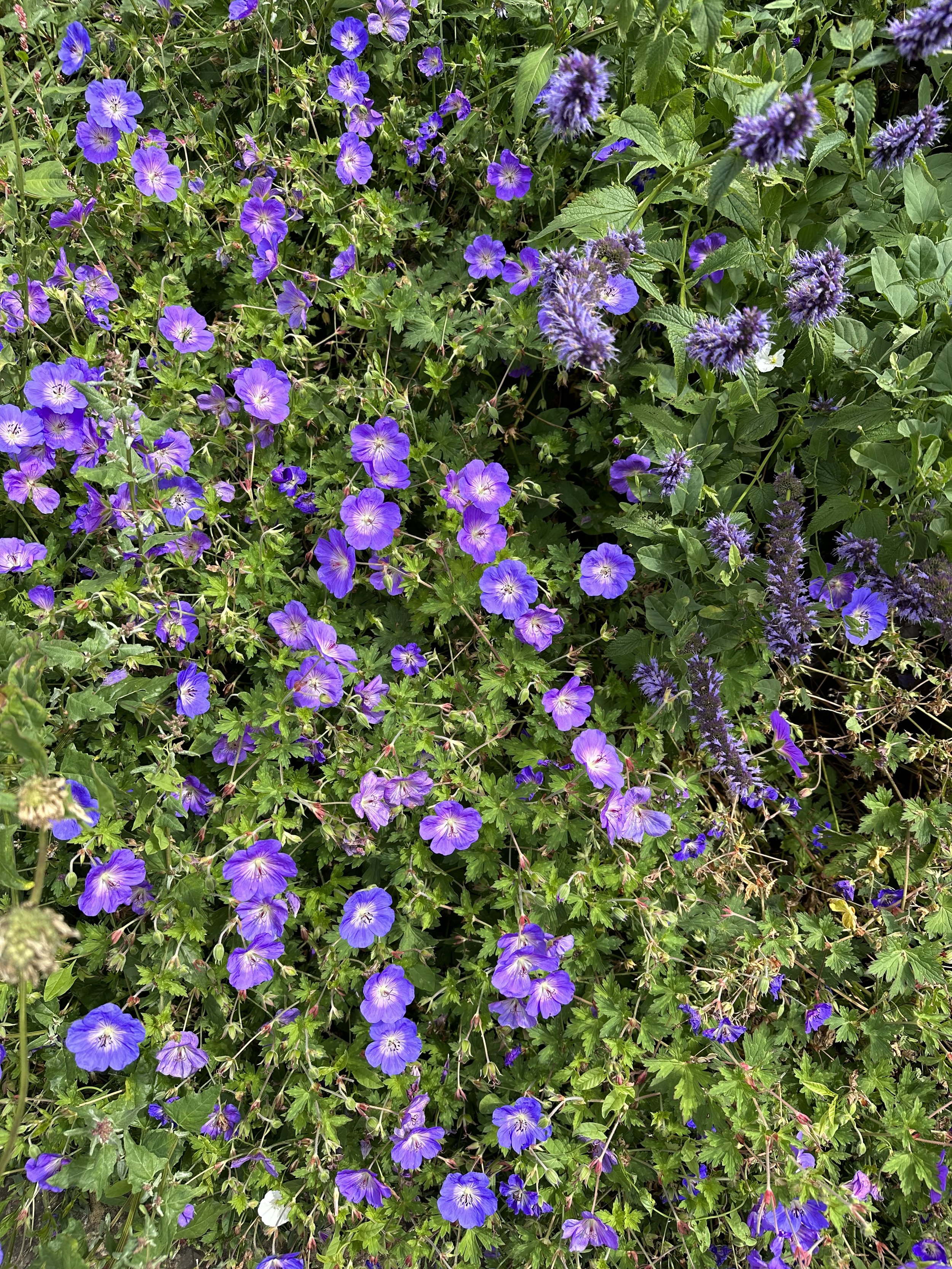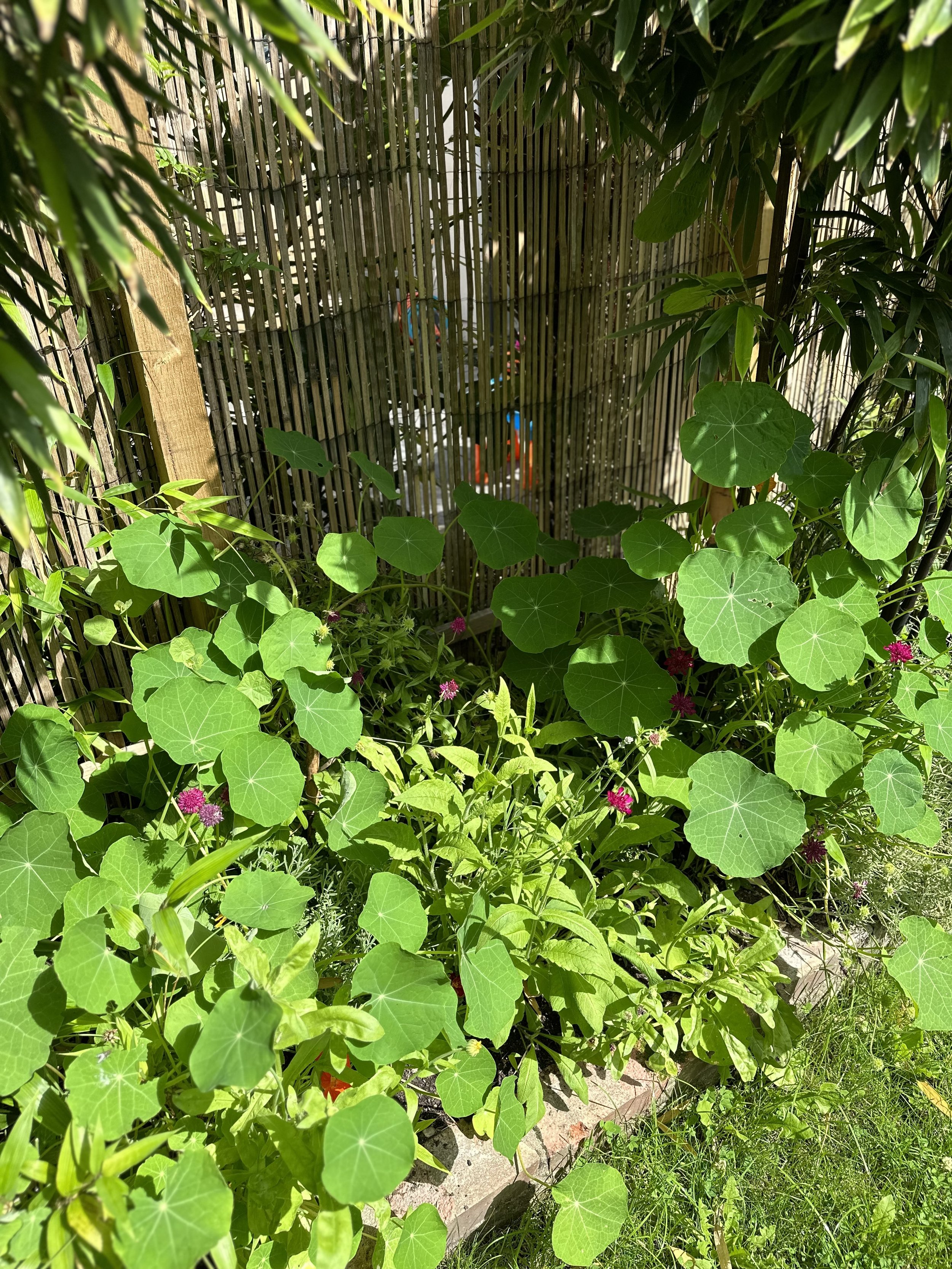Chaos Gardening: A Guide to Growing Wild
This article has links to products that I may make commission from.
In modern gardens, chaos gardening has emerged as a fascinating alternative to traditional gardening methods.
Chaos garden embodies the idea of embracing nature's randomness and avoiding strict planning and patterns.
In a world often defined by order, precision, and careful planning, the concept of a chaos garden is both intriguing and refreshing.
A chaos garden is not just a trend but a philosophy, a way of relinquishing control and allowing nature's inherent randomness to take center stage.
It’s where larger seeds meet smaller seeds, where old seeds find new life, and where potting soil and warm water nurture a blend of vegetation that's as unpredictable as it is beautiful.
Chaos gardening defies traditional planting and practice, inviting gardeners to scatter vegetable garden seeds without a plan and watch the mesmerizing dance of nature unfold.
Whether you're looking to embark on beginner gardening projects or seeking to revitalize your front yard vegetable garden, chaos gardening offers a modern twist that aligns with nature's spontaneity.
In this post, we'll explore the elements that make up a chaos garden, understand the need for such a space in our homes and gardens, and provide step-by-step guidance on creating your own chaos garden.
From selecting seed packets to understanding the role of potting mix, we'll dive deep into a world where gardening meets art, and control gives way to creativity.
So, join us on this journey into chaos gardening, where the unexpected is celebrated, and the beauty of Mother Nature is allowed to flourish without boundaries.
To learn more about sustainable gardening, check out my guides:
How to Create a Wildflower Front Yard
The Best Wildflowers for Shade
What is a Chaos Garden?
A chaos garden is a space where seeds and plants are scattered in an unplanned manner.
Unlike a traditional garden, where planting is carefully plotted, a chaos garden lets Mother Nature take the lead.
Chaos gardens are a fascinating concept that breaks away from the traditional structure and planning typically associated with gardening.
Here's a more in-depth look into what a chaos garden is:
A Symphony of Randomness
A chaos garden is essentially a space where traditional rules are set aside.
Seeds are not planted in rows or specific patterns but are scattered randomly, allowing nature to decide where they grow.
It's a way to embrace unpredictability and create a more natural and wild appearance.
A Blend of Seeds
Chaos gardens often include a mix of different seeds – flowers, vegetables, herbs – all scattered together.
This can include larger seeds, smaller seeds, old seeds, and new seed packets.
The mix can create surprising combinations and vibrant diversity, mimicking the way plants might grow in the wild.
Embracing Mother Nature
Chaos gardens align closely with natural processes.
By scattering seeds randomly and allowing them to grow as they would in nature, chaos gardens often attract beneficial insects and promote a healthy ecosystem.
This aligns with permaculture principles and can be considered a more sustainable gardening practice.
Space for Creativity
While chaos gardens embrace randomness, they also provide a space for creativity.
You can experiment with different seed mixes, potting soil, and planting techniques.
It's a form of gardening that offers freedom and encourages experimentation.
A Garden for Everyone
Whether it's a small home garden or a larger community garden space, chaos gardens are accessible to everyone.
They can be a fantastic beginner gardening project, as they don't require meticulous planning or extensive knowledge.
Reflecting Modern Garden Trends
Chaos gardens fit well with modern gardens and the movement towards more natural, environmentally friendly practices.
They also provide a sensory experience, with unexpected combinations of colors, shapes, textures, and even flavors if edible plants are included.
For more tips, check out my guide:
Here are my suggested seeds for starting a chaos garden:
Chaos Plants and Seed Mix
The chaos garden usually incorporates a diverse seed mix.
From larger seeds to smaller seeds, the variety contributes to the unexpected beauty that evolves.
Old seeds may also find a new life in a chaos garden, providing a surprise element.
What are Chaos Plants?
Chaos plants refer to the diverse array of plants that can grow within a chaos garden.
Unlike traditional gardens where specific plants are carefully selected and placed, chaos plants include a random and sometimes surprising mix of different species.
This mix might include flowers, herbs, vegetables, and even wild plants that contribute to the garden's unique character.
Seed Mix: A Core Principle
The seed mix in a chaos garden is where the magic begins.
Here's what it entails:
Variety
The seed mix often includes a wide variety of seeds.
From larger seeds like sunflowers to smaller seeds such as poppies or even edible plants like lettuce and carrots, the mix is intentionally diverse.
Old and New Seeds
A chaos garden embraces seeds of different ages.
Old seeds that might not find a place in a traditional garden can be given a chance to germinate and grow.
This utilization of old seeds adds to the unpredictability and excitement of the garden.
Purposeful Randomness
Though the seed mix is random, it's not without thought.
Gardeners may choose seeds that are compatible in terms of growing conditions and seasons.
Some might even select seeds to create a particular color scheme or to attract certain wildlife like bees and butterflies.
Scatter Planting Technique
The seeds are often scattered using a technique that mimics how seeds might naturally fall and grow in the wild.
Seeds can be mixed with potting soil or compost and then spread across the garden space.
This scattering can be done by hand, allowing for a personal and intuitive connection with the garden.
The Result: A Living Tapestry
The combination of chaos plants and the seed mix creates a living tapestry that evolves over time.
As seeds germinate and grow at different rates, the garden becomes a dynamic and ever-changing space.
Some plants may dominate one season, while others emerge later, creating a continuous cycle of growth and renewal.
Potential Challenges
Chaos gardening also comes with challenges.
The random nature of the planting might lead to competition between plants, where some may overshadow others.
Pest control and managing invasive species can also require attention and care.
For more inspiration, check out my guide:
Watering: The Role of Warm Water in Chaos Gardening
Watering is an essential aspect of gardening, providing plants with the moisture they need to grow and thrive.
In a chaos garden, where the planting is less structured and predictable, the watering approach might be different, but the importance remains the same.
Why Warm Water?
Warm water plays a unique role in gardening, especially in the context of chaos gardens.
Here's why it can be beneficial:
Encouraging Germination
Warm water can help soften the seed coat, allowing moisture to penetrate and activate the enzymes that trigger germination.
This is particularly helpful in a chaos garden where a diverse mix of seeds, including older seeds, might need extra encouragement to sprout.
Mimicking Nature
In natural environments, rainwater is often warmer than the soil, particularly during the growing season.
Using warm water in a chaos garden can mimic this natural phenomenon, providing an environment that encourages natural growth patterns.
Enhancing Nutrient Absorption
Warm water can facilitate the absorption of nutrients from the soil, aiding in the growth and development of plants.
In a chaos garden, where plants are growing together in unexpected combinations, warm water can support healthy growth across various species.
Gentle on Delicate Seeds and Seedlings
Warm water is often gentler on delicate seeds and seedlings compared to cold water, which can shock the plants. In a chaos garden, where you may have a wide variety of seeds and seedlings growing together, warm water can provide a more nurturing environment.
For more watering tips, check out my guide How Often to Water Seedlings.
Watering Techniques
In a chaos garden, watering might be less structured, embracing the garden's organic and unpredictable nature.
Techniques include:
Soaking Seeds
Warm water can be used to soak seeds before planting to encourage germination, especially for larger seeds or those with tough outer coats.
Hand Watering
Using a watering can or hose with warm water allows for a more personal connection with the plants, understanding their individual needs.
For more watering tips, check out my guide How to Use Watering Globes.
Irrigation Systems
Some gardeners might set up a system to provide warm water at regular intervals, ensuring that all plants receive the moisture they need.
For more ideas, check out my guide:
Create Your Own Chaos Garden: A Step-by-Step Guide
Step 1: Choose the Location
Selecting the right location for your chaos garden is crucial. Consider factors like sunlight, soil quality, and accessibility.
Whether it's a front yard vegetable garden or a small space in your backyard, make sure it fits your vision.
Step 2: Prepare the Soil
Good soil is the foundation of any garden, including a chaos garden. You may choose to blend potting soil with compost or garden soil to provide the nutrients needed for a wide variety of plants.
Step 3: Select Your Seed Mix
Chaos gardening is all about diversity. Pick a mix of different seeds - flowers, vegetables, herbs, both large and small seeds.
Include old seeds if you have them, and don’t be afraid to try something new.
My suggested seeds for starting a chaos garden:
Step 4: Planting Seeds
This is where the chaos begins. Mix the seeds together and scatter them across the garden space.
You can mix them with potting mix to ensure even distribution.
Don’t worry about rows or patterns; let the seeds fall where they may.
Check out our full guide to When to Plant Wildflower Seeds and The Best Wildflowers for Shade.
Step 5: Watering with Warm Water
As discussed earlier, warm water can encourage germination and growth.
Water the freshly scattered seeds with warm water to welcome them into the soil and to mimic natural conditions.
Step 6: Ongoing Care
Chaos gardens need love and attention just like normal gardens.
Regular watering (preferably with warm water), occasional weeding, and pest control will keep your garden thriving.
Step 7: Embrace the Chaos
Part of the joy of a chaos garden is watching it evolve.
Plants will grow at different rates, and surprises will emerge from the soil. Enjoy the process, observe the changes, and don’t be afraid to experiment further.
Step 8: Harvest and Enjoy
If you’ve included edible plants in your chaos garden, enjoy the fruits (and vegetables!) of your labor. Each harvest might bring unexpected delights.
Tips for Success
Understand Your Climate
Choose seeds that are suitable for your local climate and growing season.
Experiment
Don’t be afraid to try different seed mixes or planting techniques.
Observe and Learn
Chaos gardens can teach you a lot about plants and how they interact. Take the time to observe and learn from your garden.
Consider Wildlife
Your chaos garden might attract various insects and birds. Consider this in your planning and enjoy the added life in your garden.
Want to learn more about wildflowers?
Check out my guide to How to Create a Wildflower Front Yard.
Chaos gardening is more than just a gardening style; it's a philosophy that offers a unique path to home improvement, embracing nature's unpredictability and the joy of growing plants.
From understanding the role of warm water to choosing the right seed mix, creating your own chaos garden, and selecting the perfect potting soil or potting mix, the journey of chaos gardening is an exciting and enriching way to enhance your living space.
In our pursuit of control and precision, chaos gardening stands out as a refreshing alternative, inviting us to step back and revel in the wild and natural beauty of growing plants.
Whether it's a front yard vegetable garden, a scatter vegetable garden, or a space filled with chaos plants, chaos gardening adds a lively and dynamic dimension to home improvement, transforming ordinary gardens into thriving ecosystems.
Why not explore chaos gardening as part of your next home improvement project?
Gather your seed packets, prepare the soil, and embark on a gardening adventure that's as unique and vibrant as nature itself.
The lessons learned from chaos gardening extend beyond the garden's boundaries, inspiring us to approach life with curiosity, flexibility, and a willingness to embrace the unknown.
In the chaos garden, every plant, every seed, and every gardener has a place.
The beauty lies not in perfection but in the rich tapestry of life that unfolds when we let nature take the lead.
Looking for more garden inspiration? Check out my other flower garden guides:






































